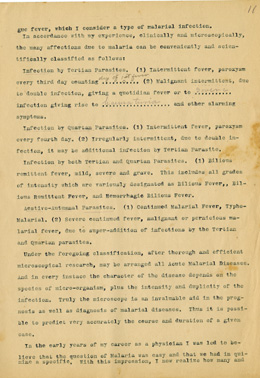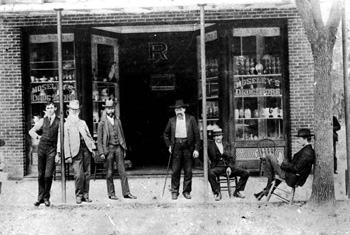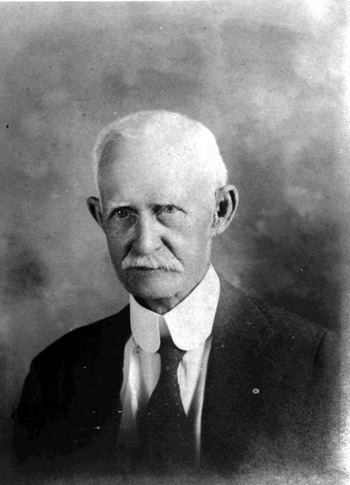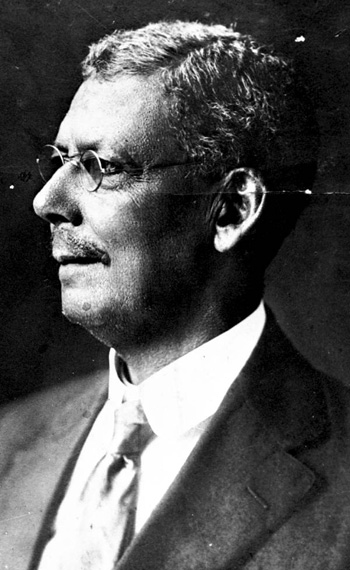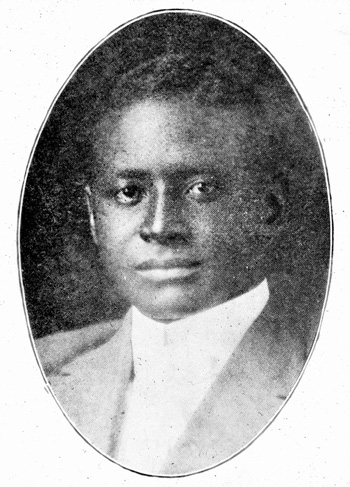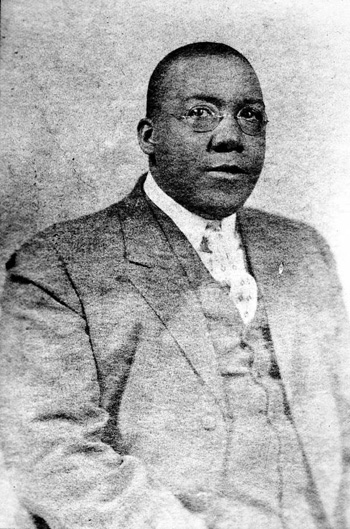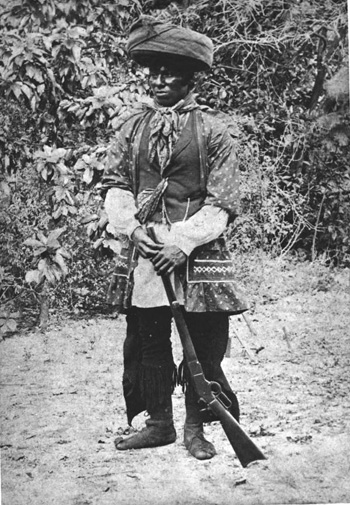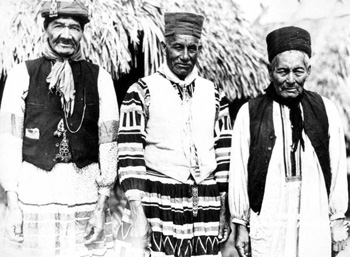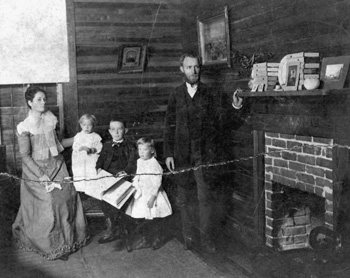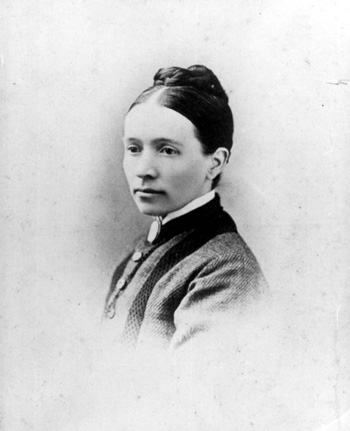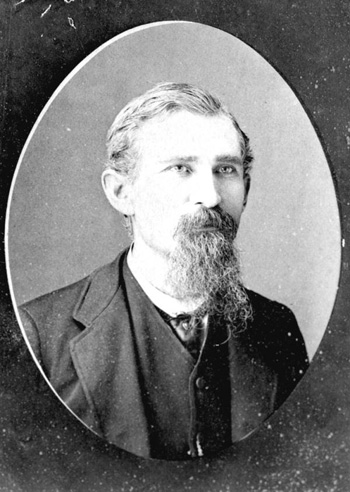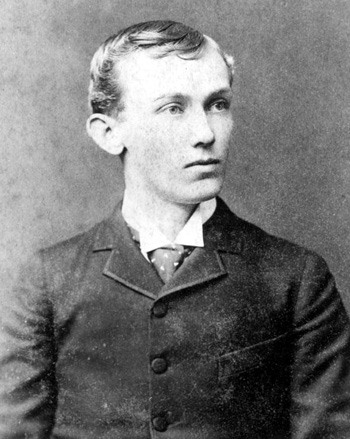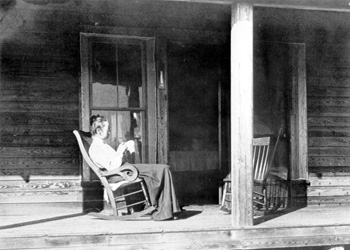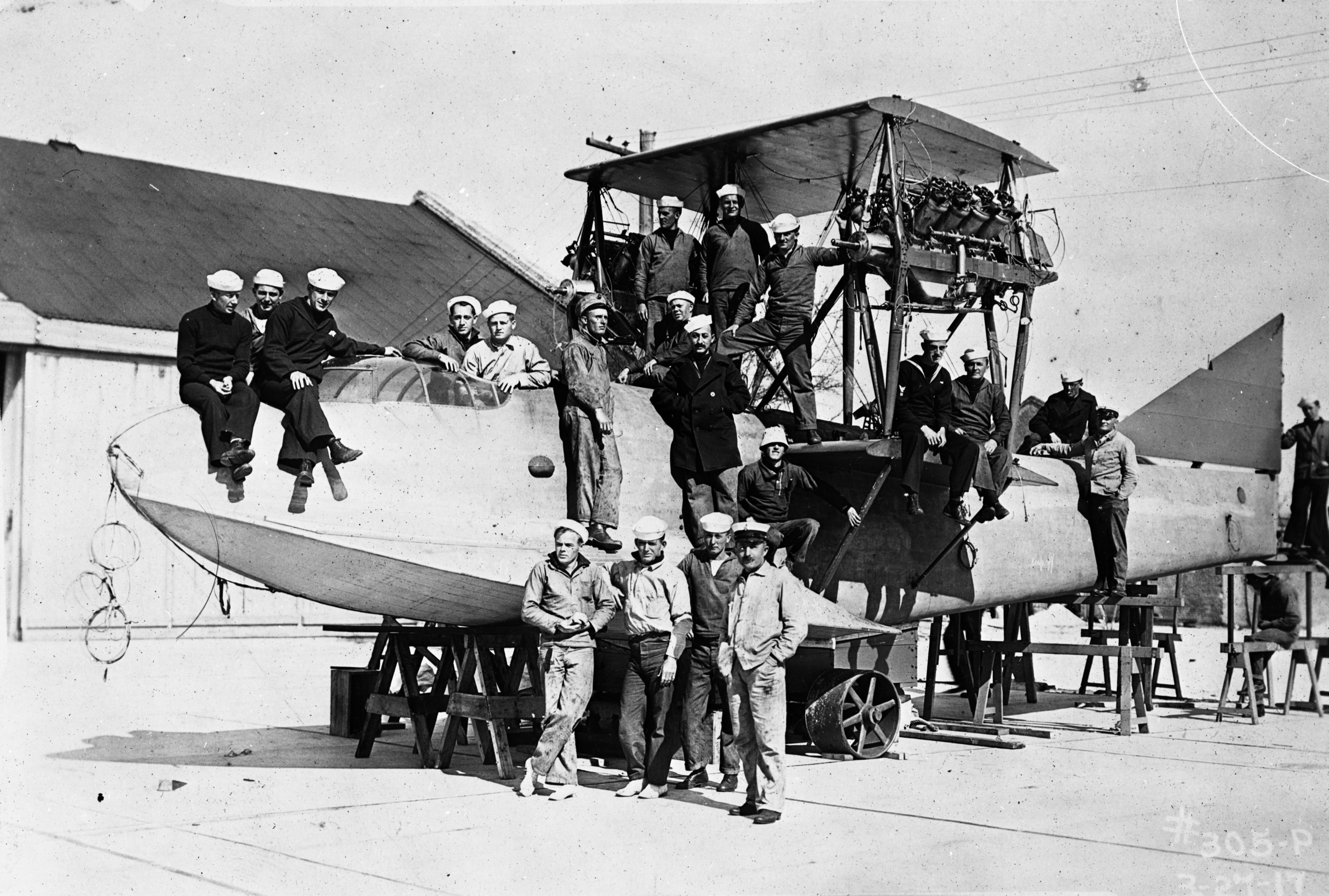Pestilence, Potions, and Persistence Early Florida Medicine
Physicians
Dr. Alonzo Lashbrook Blalock and Malaria
Malaria was a lifelong subject of study for Dr. Alonzo Lashbrook Blalock.
The inability to prevent and treat the disease sufficiently remained a point of regret for him, even after decades of service to his community as a family practitioner.
Blalock, like so many other doctors from the period, was unable to do anything other than treat patients with quinine and for discomfort, while offering assurances of recovery to the family.
Despite his assurances and good faith efforts, Blalock described how he and his colleagues would fight malaria only to watch patients die in many cases anyway.
Dr. Alonzo Lashbrook Blalock, M.D., was born in Cherry Lake in Madison County, Florida, March 17, 1862. He graduated from Emory College in 1883 and worked as a teacher in Florida schools before receiving his medical degree in 1886.
He was appointed a member of the State Medical Examining Board in 1905. He served there until 1913, while maintaining his practice in Madison, which focused on women and children. He was a lifelong advocate of prohibition, a leader in the Methodist Church, and a Mason, serving eight years as master of the Madison Lodge.
Personal and medical papers of Alonzo Lashbrook Blalock, a Madison, Florida, physician
Date: January 25, 1925
Series: N2009-9 - Papers, ca. 1920-1950
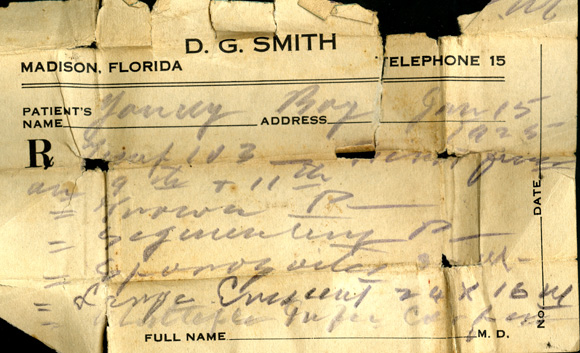
D.G. SMITH
MADISON FLORIDA TELEPHONE 15
PATIENT'S NAME < Yancey Bay Jan 15 1925 (Handwritten) > ADDRESS
(Perscription Symbol "Rx") 9th + 11th
<(five lines Illegible handwritten)>
24X16th
Dr. Blalock with group of men in front of Moseley's Drug Store: Madison, Florida (190-)
Image number: MA0191
From left: 2. B. F. Moseley 3. Dr. Alonzo Lashbrook Blalock.
Black Physicians
As African-Americans sought greater political and economic freedom in the decades after the Civil War, the medical profession offered opportunities for success, and physicians and pharmacists were often leaders in black communities. Black physicians served important professional, political, and social roles as African-American communities negotiated years of segregation and injustice.
Portrait of Dr. William J. Gunn: Tallahassee, Florida
Image number: PR14948
Born in Leon County in 1855, he was one of the first black medical doctors in Florida.
Gunn was mentored by Dr. Betton, a white physician who financed his education at Meharry Medical College. Gunn began his career as a driver for Dr. George W. Betton. His office was on College Avenue. Dr. Gunn died in 1922.
Dr. Reden Reche Williams: Marion County, Florida (19--)
Image number: N034662
Son of former slaves and local AME church founder, he passed the teaching exam at 15 and worked his way through college and medical school, returning to Florida to pass the exam with highest marks.
Dr. William Spencer Stevens
Dr. William Spencer Stevens was born November 21, 1882, in Tallahassee. He graduated from Florida State Normal and Industrial College and in 1904 received a medical degree from Meharry Medical College in Nashville, Tennessee. Stevens returned to Florida and became the first African-American to open a medical practice in Quincy. In 1906, he opened Stevens' Drug Store in downtown Quincy. In the 1930s, he then built a two-story building that served as a community hospital for the black population of the city.
Dr. William Spencer Stevens (19--)
Image number: PR03759
He was a physician, druggist, and director of the United Protective Association Hospital.
Seminole and Miccosukee Indian Healers
Seminole and Miccosukee Indian healers continued to care for the health of their people through traditional methods well into the 20th century, and the use of folk medicine is still present in modern Florida.
Miccosukee Indian Doctor Tiger: Miami, Florida (ca. 1890)
Image number: N032055
Three Seminole medicine men: Musa Isle, Florida (ca. 1915)
Image number: PR04785
Oral History
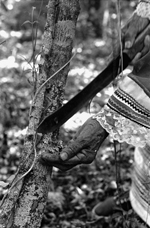
Interview with Seminole healer Susie Billie
In this oral history interview, recorded on January 18, 1985, Seminole Indian tribal healer Susie Billie of the Big Cypress Seminole Indian Reservation discusses how she learned healing practices from her mother and father as a child, including herb gathering and identification, preparing natural cures, gender roles in Seminole medicine, physical and spiritual healing, payment methods for administering services, and the use of medicine songs.
Physicians from Apalachicola to Tampa
The number of physicians steadily grew during the 19th century in Florida, and physicians became more qualified and professionally organized. However, people in many areas of Florida relied on traditional or self-trained healers.
Dr. Francis Bryan Wakefield and family: Apalachicola, Florida (ca. 1900)
Image number: Rc05532
Dr. Wakefield came to Apalachicola in the 1850s. He was a surgeon and pharmacist in the civil war. L-R: Ethel Kilbourn Wakefield, George N. Wakefield, Earl Kilbourn Wakefield, Francis Bryan Wakefield, Jr. and Dr. Francis Bryan Wakefield.
Mary Jane Safford, first woman physician to practice in Florida (18--)
Image number: Rc20846
Mary Jane Safford's brother, Anson Safford, was the former governor of the Arizona Territory, and he founded Tarpon Springs in 1882. Mary Jane came with the governor and Mrs. Safford to Tarpon Springs in 1882. She was a nurse in the early days of the Civil War, studied medicine, taught at the Boston University Medical School, and was the first woman physician to practice in Florida.
Dr. Edward B. Fleece, Wildwood's first physician (ca. 1872)
Image number: N046852
Born in Lebanon, Kentucky, to Dr. and Mrs. James Fleece of Fayette County, Kentucky, in 1840. Graduated from Louisville Medical College, Louisville, Kentucky. Married Mariah L. Ames on July 19, 1868, and moved to Wildwood. He was Wildwood's first physician. He died in 1898.
Miami's first physician, James M. Jackson, Jr. (1885)
Image number: Rc08897
This photo was taken while Jackson was a student at Bellevue Hospital Medical College in New York City.
Henriette Martens sitting in a rocking chair on the porch of her home: Miami, Florida (1899)
Image number: rc13870
Henriette Martens, a homeopathic medicine practitioner, was one of the first doctors in south Florida. She had the first telephone outside downtown Miami, and a pineapple and vegetable farm just south of Lemon City.

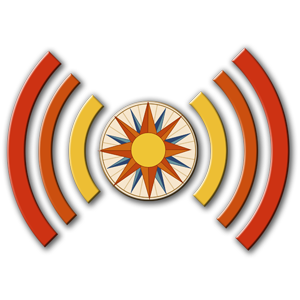 Listen: The FolkFolk Program
Listen: The FolkFolk Program